#Declaration of Independence of the United States
Explore tagged Tumblr posts
Text
Oh, do you mean like how every single signer of the United States’ Declaration of Independence was complicit in the treason against the British Crown?
Every single person that was in there would need to be complicit like that?
Boy is this going to be interesting…
Key takeaways:
Part of working with Trump and his administration is managing his ego and the political jabs, but ultimately we have work to do and a responsibility to Californians” - Alex Padilla, Senior State Senator
Sort of an interesting take, considering he is a Chicano American from Los Angeles who is a notable warlord to his native population
“The approach is “open hand, not a closed fist,” the Newsom adviser said. “Ultimately, he’s got to work with the administration, so he’s got to chart a path through a very, very difficult terrain. What he’s really got to be seen doing is protecting California and defending people whose homes burned down.””

I am just going to observe that relationship over the next two-three years, because it is an interesting situation in which a man that enriched himself on the vices of others and eventually take control over the State is positioning the whole of the State’s legislative approach as a bulwark against the political platform of a President that enriched himself through the provision of housing for those of relative wealth and subsequent branding mastery who subsequently took control over the whole of the country’s federal government while I, one of the country’s- and that particular state’s- educated poor sits in Italy, having requested political asylum at the end of a family vacation after years worth of economic, socio-cultural, and political chicanery, open-indifference to criming, and the social engineering of inversions of the criminal-victim crime-non-crime resulted in… almost comedically buffoonish hardship, harassment, and bonafide criminal conspiracy in bipartisan, military, and civilian segments of the population
Should be a pretty good show
113 notes
·
View notes
Text
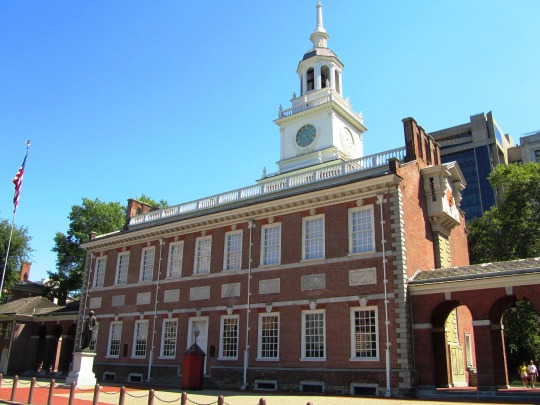



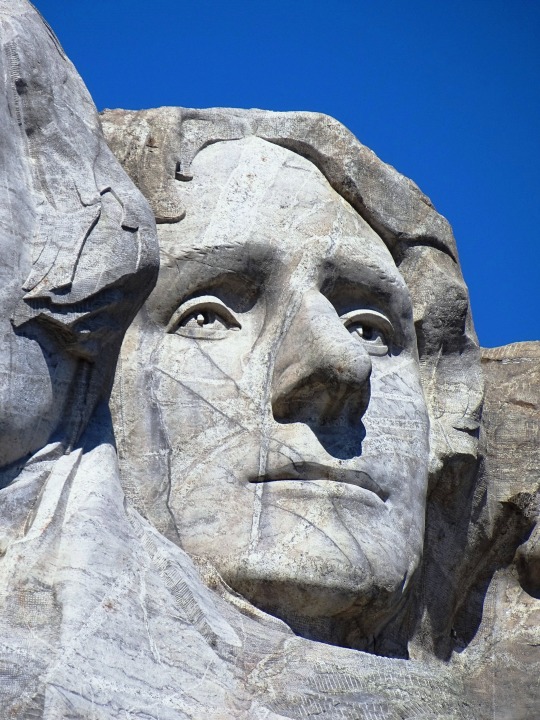
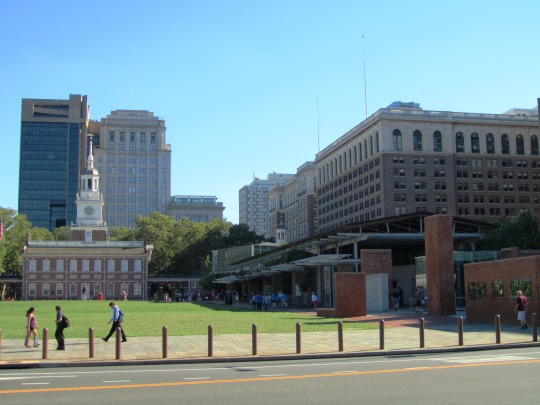
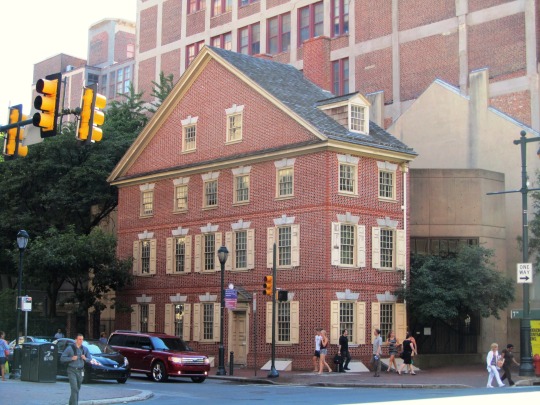

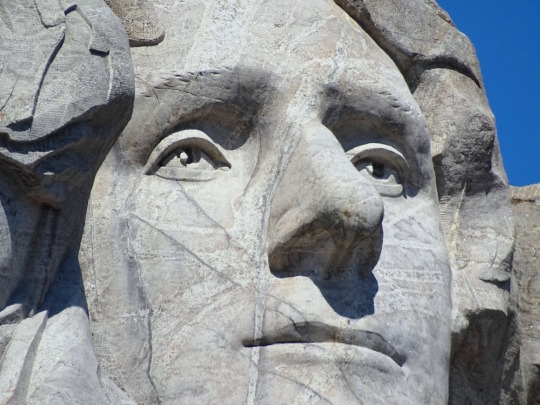

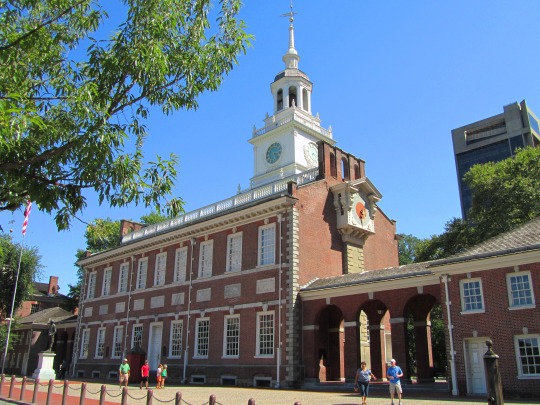
The first formal public readings of the Declaration of Independence of the United States took place on July 8, 1776 in Philadelphia by John Nixon in the yard of Independence Hall.
#first formal public reading#Declaration of Independence of the United States#8 July 1776#anniversary#US history#travel#original photography#vacation#tourist attraction#landmark#cityscape#architecture#Philadelphia#Independence Hall#Pennsylvania#exterior#Independence National Historical Park#520 Chestnut Street#Independence Mall#Congress Hall#Declaration House#Gutzon Borglum#Thomas Jefferson#Mount Rushmore National Memorial#South Dakota#summer 2013#2019
9 notes
·
View notes
Text



National Treasure (2004, Jon Turteltaub)
27/06/2024
#national treasure#film#2004#jon turteltaub#nicolas cage#diane kruger#justin bartha#sean bean#jon voight#2007#National Treasure Book of Secrets#knights templar#arctic#United States Declaration of Independence#scavenger hunt#freemasonry#new york city#trinity church#wall street#united states#italy#Seven Cities of Gold#jerry bruckheimer#ed harris#helen mirren#ABC Signature#disney+#english language#spanish language#Category 2004 films
20 notes
·
View notes
Text

Dancing under the sky. 🇺🇸🧨💥🧨🧨🔴⚪️🔵
#dancing#snoopy#charlie brown#peanuts#peanuts gang#fireworks#firework#fireworks display#made in the usa#usa#independence day#4th of july#fourth of july#july 4th#red white and blue#Boston pops#july fourth#American#made in america#americana#happy fourth of july#happy 4th of july#stars and stripes#united states#united states of america#charles m schulz#declaration of independence#us flag#popsicle#happy 4th
21 notes
·
View notes
Text
Just a reminder, the Declaration of Independence contains this little gem:
"That whenever any Form of Government becomes destructive of these ends, it is the Right of the People to alter or to abolish it, and to institute new Government, laying its foundation on such principles and organizing its powers in such form, as to them shall seem most likely to effect their Safety and Happiness."
Think about that.
#USA#United States#United States of America#US#Declaration of Independence#US Declaration of Independence#politics#US politics#Election 2024#2024 election#2024 presidential election#presidential election#Revolutionary War#American History#US History#revolution#American Revolution#Revolutionary War II#Revolutionary War 2#Second American Revolution#reblog#please reblog#boost#signal boost#please boost
15 notes
·
View notes
Text

Happy Fourth of July!!! Never forget those who helped the cause in America’s Independence (including Connor)
#assassin's creed#ac#connor kenway#ratohnhaké:ton#USA#United States#America#1776#July 4#July 4th#declaration of independence#assassin’s creed 3#ac3#Connor#george washington#independence day
11 notes
·
View notes
Text

"Declaration of Independence" by John Trumbull
67 notes
·
View notes
Text







#founding fathers#founding fathers of the united states#rare letter#signatures#john adams#benjamin franklin#thomas jefferson#bonhams#Envoy Extraordinary of the King of the Two Sicilies#declaration of independence#free trade#auction#foreign policy#alexander hamilton#treaties#1700s#18th century
5 notes
·
View notes
Text
you know, the preamble to the (us) constitution is by far the shortest piece of english writing i've ever failed to memorize
#i have to specify english because i also failed to memorize the st michael prayer in latin#but in english i can usually nail down 12-16 lines of poetry without even blinking#prose is harder but the preamble is the only thing that really kicks my ass#i can only get one phrase beyond the bit everybody knows#we the people of the united states in order to form a more perfect union establish justice... and there it all goes out the window#something about commerce?#maybe it's just not very memorable but i mean i can do the declaration of independence all the way to the start of the specific charges
11 notes
·
View notes
Text
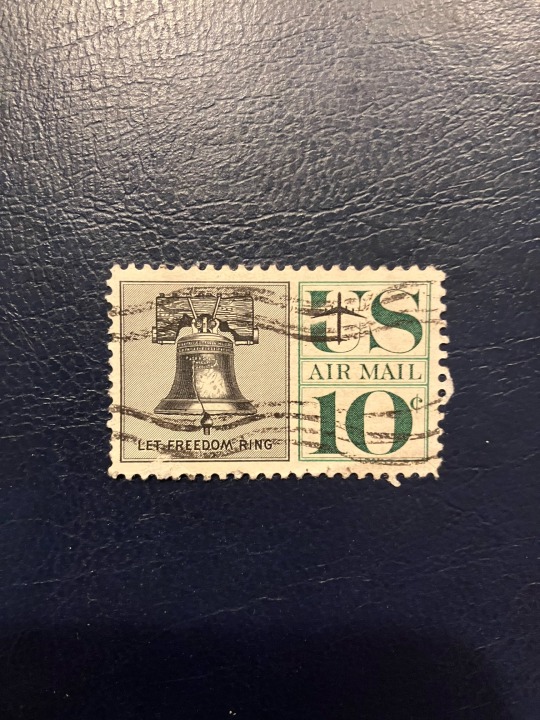
Újra átnyergelünk a Tengerentúlra, vagy hát inkább átrepülünk, mert egy légiposta bélyeg kerül terítékre. Ezt a négytagú airmail sorozatot két évig nyomták, 1959-60-ban, a képen látható darab pedig a legkisebb tagja. Érdekes, hogy a sorozat neve hivatalosan New Daily Stamps, de amúgy meg a szabadsággal kapcsolatos jelentős amerikai jelképek láthatók rajtuk, úgymint ezen a 10 centesen a híres Liberty Bell, a sárga 15 centes két változatán (csak a fogazat különbözik) a Szabadság szobor, illetve a piros 25 centesen maga Lincoln a hármas jelmondattal. A bélyegekből több tízmilliót nyomtak, ebből a 10 centesből, konkrétan 40 milliót, így bár régi, de nem érnek nagyon sokat, egy ilyen használt kb. 100 forintot, egy posztatiszta pedig 3-400 forintot.

Írnék azért pár szót erről a harangról is, hiszen ez nem egy akármilyen harang! Az amerikai függetlenség egyik legjelentősebb jelképe, melyet Londonból rendeltek meg 1752-ben. Már egy évvel előtte megépítették a tornyát Pennsylvania State House területén - ma a Szabadság Csarnokaként ismert az épület - ahol a 945 kilós harang 1753-ban foglalja el helyét. Egy idézet van belevésve a Leviták könyvéből angolul: 'Proclaim LIBERTY throughout all the land unto all the inhabitants thereof.' (25:10). A harang első megszólaltatásakor megrepedt, aztán ez a repedés terjedt még, további két megszólaltatáskor. Eredetileg akkor szólaltatták meg, amikor a törvényhozókat összehívták határozathozatalra, illetve nagyobb városi események kezdésekor. A Függetlenségi Nyilatkozat kihirdetésekor, 1776 július 8-án az akkori Egyesült Államok összes harangját megszólaltatták egyszerre, így ezt is, de a jellegzetes nagy repedés ami látható rajta nem ekkor keletkezett, hanem valamikor a XIX.század elején, erről különböző mendemondák szólnak, hogy kinek a hatására.
A harang 1847-ben lett országszerte híres és vált jelképpé, amikor is elkezdett terjedni egy történet, hogy egy idő harangozó megszólaltatta 1776 július 4-én, amikor megtudta, hogy kongresszus megszavazta a függetlenséget. Azóta persze kiderült, és kutatók megerősítették, hogy a harang (legalább is ezügyben) nem szólalhatott meg aznap, mivel semmilyen bejelentés nem történt a Nyilatkozat elfogadásáról aznap semmilyen városban, az információ a falak között maradt. Ennek ellenére a nép a mai napig akkor és azóta is elfogadja ezt a történetet, és persze kétkedők is vannak a mai napig, a lényeg, hogy a harang tulajdonképpen egy légből kapott sztori mentén lett az ország egyik fontos jelképe. Ez olyannyira így volt, hogy 1885-től Philadelphia városa elkezdte különböző alkalmakra, különböző városoknak kölcsönadni: utazóharang lett belőle! Ahogy az lenni szokott ebből persze probléma lett, egyrészt a repedés a sok ide-oda pakolástól elkezdett aggasztóan nőni, másrészt a gátlástalanabb lakosok elkezdtek törni belőle apró darabokat szuvenírnek. Ezért aztán 1915 óta, a harang nem hagyta már el helyét, és nem adják oda senkinek (nagyon helyes)!
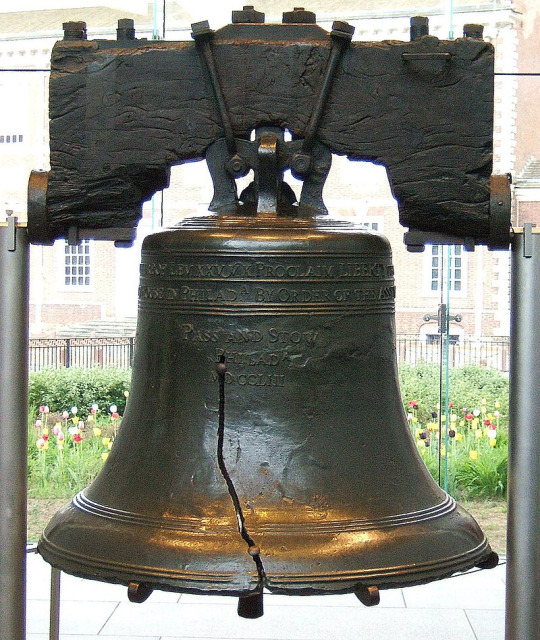
#bélyeg#stamp#united states#amerika#amerikai egyesült államok#us#1959#airmail#légiposta#liberty bell#philadelphia#declaration of independence#függetlenségi nyilatkozat#10 cent
12 notes
·
View notes
Text
i recieved a small booklet containing the entirety of the constitution of the united states and the declaration of independence as a gift a few months before the school year ended
#presidents#us presidents#the constitution of the united states#the declaration of independence#the girl who gave it to me was a girl in one of the honors courses#i still have it near my bedstand
3 notes
·
View notes
Text











The first formal public readings of the Declaration of Independence of the United States took place on July 8, 1776 in Philadelphia by John Nixon in the yard of Independence Hall.
#first formal public reading#Declaration of Independence of the United States#8 July 1776#anniversary#US history#travel#original photography#vacation#tourist attraction#landmark#cityscape#architecture#Philadelphia#Independence Hall#Pennsylvania#exterior#Independence National Historical Park#520 Chestnut Street#Independence Mall#Congress Hall#Declaration House#Gutzon Borglum#Thomas Jefferson#Mount Rushmore National Memorial#South Dakota#summer 2013#2019#USA
0 notes
Text

X
9 notes
·
View notes
Text
Anyway, shoutout to these guys today
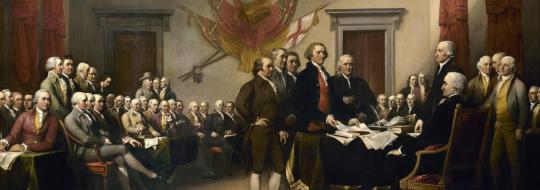

And happy 247th anniversary of the signing of this awesome document

#happy 4th of july#happy 4th#happy independence day#4th of july#independence day#founding fathers#declaration of independence#1776#july 4 1776#happy 247th anniversary#247 years#usa#american#america#united states of america#patriot#patriotic#patriotism
6 notes
·
View notes
Text

#statue of liberty#declaration of independence#the constitution of the united states#american freedom#liberty#freedom
2 notes
·
View notes
Text
Listen to me. Listen very carefully:
They are trying to wear you out.
They are trying to wear you out, and they own most major social media now, along with many major media outlets. The disinformation machine is cranking along. You are going to have to slow the fuck down and read things before you help them wear out other people, too.
So you just saw a post about a real scary bill, hunh? Republicans want to make it a capital offense to pet dogs and repeal The Sky Is Blue Act of 1793, declaring the new official color of the sky to be squant? Damn, that sounds scary.
Let's go look up this fictitious "Make The Sky Squant Again Act" on GovTracker* & on the official legislative tracker on congress.gov!
Well, let's see... GovTracker estimates it has a 1% chance of even getting out of committee and a 0% chance of being enacted, while congress.gov says this bill has 2 cosponsors who have been in the House and combined total of less than a month. The bill doesn't have any actual text, and it was referred to 5 different committees.
That fictitious bill and a hundred others like it are quite literally not worth your time, and more than that, continuing to wring your hands about it and tell other people about the scary scary squant sky bill only does their work for them. It scares people, it makes them spend time and energy on it, and it wears them out. It is a legislative Gish Gallop, meant to throw so many things at people that we can't keep up.
Even calling or messaging your Rep in this case means their staffer has to waste time responding to you and letting you know that Representative Buttzonheads definitely won't support making petting dogs a capital offense, a thing that will never, ever happen regardless.
Staying engaged in this environment is going to require protecting your heart and protecting your energy, yes, but also protecting the energy of others. This is why WWII propaganda posters also included ones taking people to task for spreading panicky rumors and undermining morale.
Do you know why most observant Jews don't eat chicken and dairy together, even though the ban is on red meat and dairy together bc you're not supposed to cook the calf in the milk of its mother?** It's not because we think that chicken might secretly lactate or Just Because. It's because the rabbis decided that if I'm sitting out in public and eating turkey and cheese together, someone might glance at the turkey and mistake it for red meat and think, "oh, well, I know that Spider is a good Jew, there must have been a change, or maybe I can just justify it to myself that if Spider does it, it must be permissible to bend the rules just that much." And I would then be accidentally leading my fellow Jew astray. We are responsible for being even more careful for the sake of others than we are for ourselves.
It's the same principle here. We need to really be careful about the information we are spreading and check things past reading a news site. Is it true? Is it relevant? Is it meaningful? Is the news site one I recognize? Can I find meaningful independent corroboration on another site, which is to say, if I find an article about it on a second site, is it just quoting or rephrasing this site?
Yeah, that is a lot. But that's how we keep them from using us to lead our fellows astray.
*GovTracker is an independent site. They explain their methodology in their About section.
**I cannot say enough how I am not at this time interested in going on a Jewish Side Quest About Dietary Laws on this post. Usually, I love it, but hold off this time, please, y'all. Let's stay on target this once.
15K notes
·
View notes